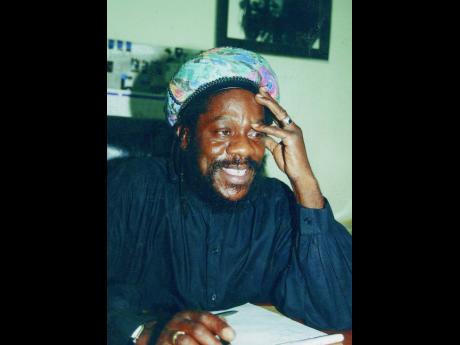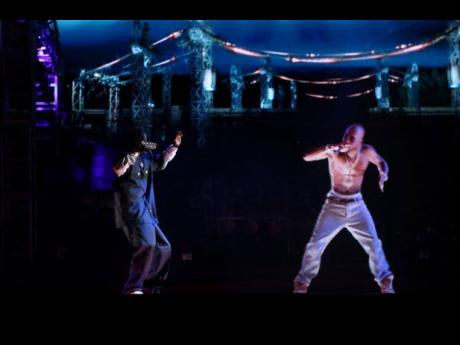Hologram concerts for dead reggae artistes not far-fetched
Imagine Dennis Brown on the Reggae Sumfest stage in July with his classic opening number Here I Come and pearly white smile …
Or better yet, Garnet Silk joining Buju Banton on stage on his Long Walk to Freedom tour.
For several years, deceased artistes have been temporarily resurrected on stage, in museums, or private exhibitions through holographic technology. News of a hologram concert for late singer Whitney Houston made headlines last week as fans expressed bewilderment and excitement at the possibility of the singer belting her powerhouse vocals live, seven years after her death.
According to local music industry frontman. Joe Bigdanovich, Jamaica has come close to having hologram-based concerts in the past, notably of late singers Bob Marley and Peter Tosh.
“We thought about it a bunch of times for Reggae Sumfest, we held negotiations and discussions and came very close to doing something with Bob Marley a number of years ago,” Bogdanovich told The Sunday Gleaner.
According to artiste manager Copeland Forbes, there were plans to have a holographic Marley perform alongside his former Wailer mates Tosh and the only living Wailer, Bunny, at London’s O2 arena in 2012.
“Bunny Wailer had the idea at that time to get a hologram of Bob and Peter beside him on the stage. It would have been good for the Jamaica 50th independence celebrations. we even had it set out, but then the funding for everything got a bit ridiculous,” he said.
Information and communication technology lecturer at the Vocational Training Development Institute, Ssyade Gayle told The Sunday Gleaner that it could take a minimum of J$9 million to produce a hologram of a deceased artiste. He added that while the idea of using holographic technology to stage concerts for late reggae artistes is not improbable in Jamaica, sourcing resources may prove tedious.
“We would need to have the right software application and technologies to do this. I don’t believe the technical competencies are not in Jamaica for us to do that. We don’t have the resources, which is really the problem, but I believe it’s doable, and I wouldn’t be surprised if we don’t have that sort of technology already being explored. It’s not far-fetched. it’s just for someone to have the vision to make it happen and just get the right people in place.”
He explained that holograms are essentially computer-generated illusions using algorithms to mimic attributes of the artiste.
“Hologram technology is, basically, the use of light to project images to give you the illusion of you witnessing something real,” he said. “In Whitney Houston’s case, they will probably use some of her video performances then different technologies to project light and give you the illusion as if she is performing live on stage. It’s similar in nature to the development of 3D characters. Advanced algorithms can take different attributes of the person, like their hands and height ... and when all of that is put into an algorithm, it automatically generates an image and creates the illusion.”
ARRANGING PERFORMANCE
He estimated that orchestrating a hologram-based concert could take approximately nine months.
These concerts are not new. Celine Dion performed alongside an Elvis Presley hologram in 2007, and the same treatment was used for Tupac Shakur in 2012 when he joined Snoop Dogg and Dr Dre on the Coachella stage. Rock and roll star Roy Orbison, moonwalking Michael Jackson, and heavy metal singer Ronnie James Dio have also performed posthumously courtesy of holographic technology.
GREATER CAUSE
For Bogdanovich, the process to host hologram events would only be worth it if it was connected to a greater cause like a charity. “It’ll do more good that way, and maybe attract more support for sponsorship or investment, to give back to a community, perhaps a school, or enhance someone that can maybe build that computer lab with cutting-edge technology – just something that makes a difference,” he said. “The technology is better now, so you’d have to bring in the right people for the right reasons as opposed to exaggerated financial reasons to make it work. These things need to be funded, to give opportunities to youth so they can get a piece of the pie, that’s the trick. There’s a lot that can happen in this country, and I think there are some people who are thinking about it and willing to go the distance and make it happen, and that is the key.”
Having worked with several artistes who have passed away, Copeland believes that they would not find these virtual concerts disrespectful.
“I have worked with all of them, and I know this is something they would have approved of without any hesitation,” he said. “It would be great to have one with Dennis and Garnet Silk on stage together. that would be a hit and would leave people spellbound. I’d love to be a part of something like that. I’m already getting goosebumps thinking about it.”
Friend of Dennis Brown and executive producer of his annual tribute concert Trevor Douglas added: “I would love to see him on the next Dennis Brown concert in February, headlining a show in his honour. That would be so nice.”



